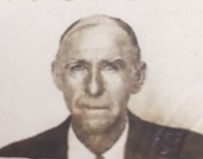Personal Details
Born: 13 March 1880 in Whitchurch, Shropshire.
Family: He was the third of ten children born to Michael Joseph O`Neill and his wife Emily, nee Henshall. Alfred did not marry.
Residence: In 1881 his family were living in Chester Road, Whitchurch. Ten years later they had moved to Grindley Brook, Whitchurch. He and his family were still living there in 1901. His address on his attestation in 1916 was Swift Current, Saskatchewan, Canada. His address when discharged in 1919 was 460 Jarvis Avenue, Winnipeg, Manitoba. He emigrated to the United States of America on 19 February 1923 and was living at 819 Towne Avenue, Los Angeles, California. In 1941 he was living at 4334 Russell Avenue, Holywood, California and in 1942 he was living at 343 Santa Rosa Hotel, Los Angeles.
Employment: In 1901 he was a journeyman bricklayer. At the time of his enlistment in Canada in 1916 he was a labourer.
Died: 16 March 1961 in Los Angeles.
Military Details
Regiment: Canadian Expeditionary Force
Rank: Private
Service Number: 252336
Date of Enlistment: 3 March 1916
Date of Discharge: 12 May 1919
Reason for Discharge: Demobilisation
Other Information: His brother, Michael, also served in WW1.
Alfred was awarded the Campaign medals (Victory and British War Medals)

The British War Medal (also known as 'Squeak') was a silver or bronze medal awarded to officers and men of the British and Imperial Forces who either entered a theatre of war or entered service overseas between 5th August 1914 and 11th November 1918 inclusive. This was later extended to services in Russia, Siberia and some other areas in 1919 and 1920. Approximately 6.5 million British War Medals were issued. Approximately 6.4 million of these were the silver versions of this medal. Around 110,000 of a bronze version were issued mainly to Chinese, Maltese and Indian Labour Corps. The front (obv or obverse) of the medal depicts the head of George V. The recipient's service number, rank, name and unit was impressed on the rim.
The Allied Victory Medal (also known as 'Wilfred') was issued by each of the allies. It was decided that each of the allies should each issue their own bronze victory medal with a similar design, similar equivalent wording and identical ribbon. The British medal was designed by W. McMillan. The front depicts a winged classical figure representing victory. Approximately 5.7 million victory medals were issued. Interestingly, eligibility for this medal was more restrictive and not everyone who received the British War Medal ('Squeak') also received the Victory Medal ('Wilfred'). However, in general, all recipients of 'Wilfred' also received 'Squeak' and all recipients of The 1914 Star or The 1914/1915 Star (also known as 'Pip') also received both 'Squeak' and 'Wilfred'. The recipient's service number, rank, name and unit was impressed on the rim.

